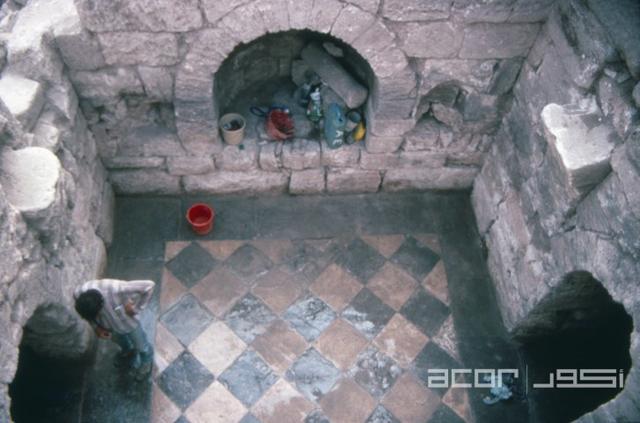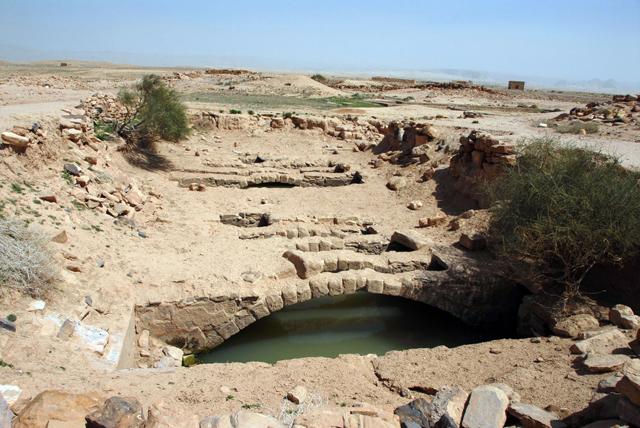You are here
Scholar explores pilgrim routes in ancient Abila
By Saeb Rawashdeh - Aug 09,2022 - Last updated at Aug 20,2022

The remains of the 6th century Byzantine church in Abila (Photo courtesy of ACOR/Rami Khouri Collection)
IRBID — Ancient Abila, located about 12km northeast of Irbid, is a case study for scholars who want to track pilgrim itineraries in the Late Antiquity, said W. Smith, a professor of History and Bible from Mid-Atlantic Christian University, North Carolina, during his presentation at the recently concluded International Conference on the History and Archaeology of Jordan at Yarmouk University.
In his presentation “Tracking Pilgrims in Jordan during Late Antiquity: Observations from Abila”, Smith said that that there is no reliable ancient or mediaeval evidence about pilgrimage to Abila, but scholars should not ignore significant indicators and artifactual — denoting or relating to an object made by a human being, typically one of cultural or historical interest — evidence that a site attracted both Christian and Muslim pilgrims.
Smith said that the central aqueduct at the site provided water from Syria and Abila had more than four aqueducts. “As a result of all that water, inhabitants had the opportunity to grow food,” he added.
Abila was bypassed by the major Roman roads in the Late Antiquity, the historian said, although sociologically the city was set up to be a church seat.
Romans developed agriculture and wine production at the site, and the five aisle church building was erected in Abila, Smith said, adding that specialised structures and features have been very important and many of them survived to these days.
“As early Christianity crossed through Jordan, it often produced monumental structures. Among the remains of Abila in Palaestina Secunda, the Byzantine churches stand out as some of the most remarkable finds,” Smith said.
“Abila was once the seat of a bishopric, and previous excavation seasons have confirmed the considerable importance of Christianity within the culture at Abila in the Byzantine era,” Smith said.
He also mentioned decorated fountains inside churches. Some decorative motifs serve ecclesiastical functions, he continued, and “this is especially true with the chancel screens used to separate the sacred space of the apses”.
“The Abila churches both display an intriguing development by screening off areas at the flat walled, eastern end of their side aisles. At the ends of these aisles the restrictive screens and the vertical posts are gone but the hard limestone foundation course remains, showing the placement of the posts and the screen sections,” Smith noted.
“Furthermore, the original excavation assessments have suggested that churches were among the latest monumental Byzantine structures at Abila [from the 6th or even 7thcentury AD]. Most of these buildings appear to have suffered a similar calamitous demise during the earthquake of AD 747/ 748,” Smith said.
Thus, at least most of these basilica churches were in simultaneous use through the end of the Byzantine era and up to the end of the Umayyad period, he added.
Related Articles
AMMAN — Next year will mark 42 years of excavations carried out at the archaeological site of Abila, also known as Tel Abila, which belonged
AMMAN — Abila, an ancient site located 13km northeast of Irbid, which belonged to the ancient federation known as the Decapolis, is a matter
AMMAN — Despite no “direct literary sources”, a Canadian scholar is piecing together archaeological clues to the origins of the ancient sett


















